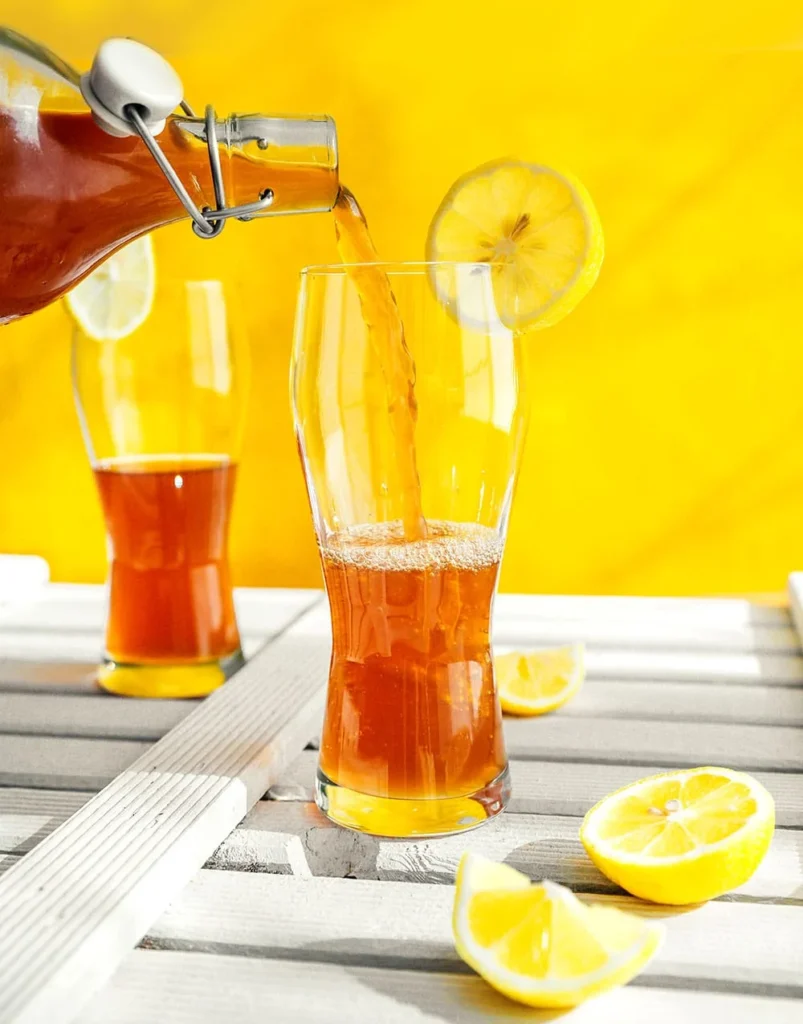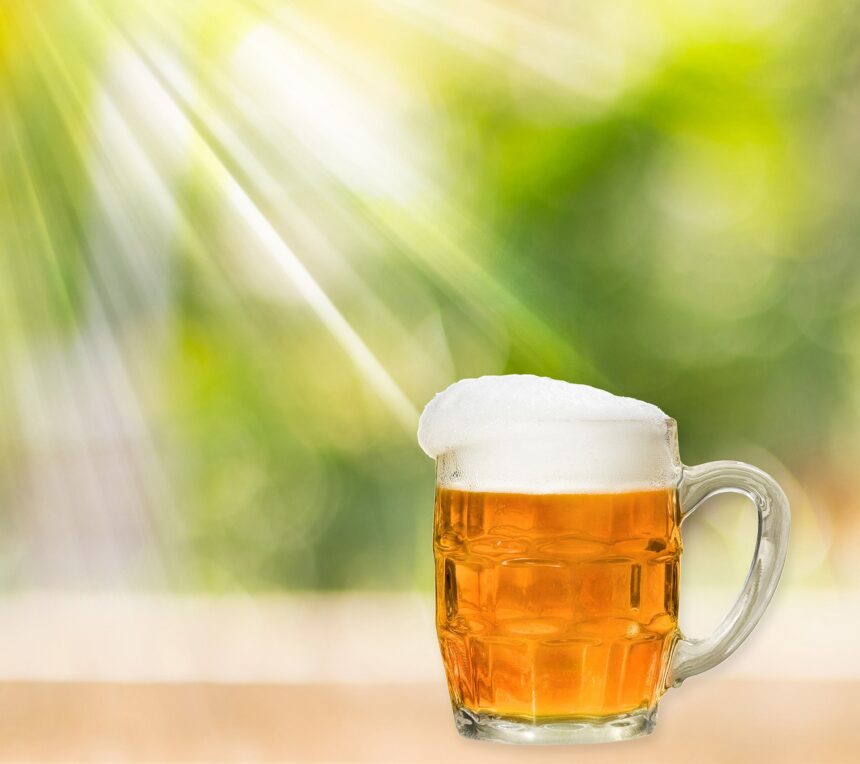When it comes to cooking, baking, or even enjoying a cold drink, understanding measurements can be a game-changer. Accurate measurements are crucial in the culinary world, where even a slight variation can alter the outcome of your dish significantly. From ensuring the perfect rise in your cakes to achieving the right balance of flavours in your sauces, precise measurements play a vital role.
You might find yourself asking, How many ml in a pint? This question is more common than you think, especially for those who engage in cooking or bartending. The importance of knowing this conversion cannot be overstated, as it serves as a bridge between different measurement systems and can prevent confusion, particularly when following recipes from various regions.
What is a Pint?
A pint is a unit of volume that is commonly used in the United States and the United Kingdom. While the two countries share this unit, the volume it represents differs slightly.
- In the United States, a pint is equivalent to 16 fluid ounces, or approximately 473.176 ml. This measurement is widely used in food and beverage industries, especially when dealing with liquids.
- In the United Kingdom, a pint holds 20 fluid ounces, which translates to around 568.261 ml. This larger pint size is often seen in pubs and bars, making it the standard measurement for beers and ciders.
Understanding this difference is crucial when measuring ingredients or beverages, especially if you’re following recipes from different regions. It can be quite confusing if you aren’t aware of these distinctions, particularly in a world where globalisation has made international recipes readily available.
Why Is It Important to Know the Conversion?
Knowing how to convert pints to milliliters (ml) is not just useful for recipes; it’s also important in various situations, such as:
- Cooking and Baking: Recipes often use different units of measurement, and a correct conversion can mean the difference between a delightful dish and a culinary disaster. For example, a recipe calling for a pint of cream that you mistakenly measure as a US pint instead of a UK pint could lead to a much richer or thinner sauce than intended.
- Mixology: Bartenders need to accurately measure drinks. Knowing How many ml in a pint ensures that cocktails are mixed correctly, leading to a consistent taste experience for customers. For instance, a cocktail that calls for half a pint of soda might need adjustments if the bartender assumes it’s a US pint when it’s really a UK pint.
- Health and Nutrition: Many nutritional labels use ml for liquid servings, and understanding these conversions helps in tracking intake. For example, if you’re monitoring your fluid intake for health reasons, knowing the difference between a pint and its milliliter equivalent can help you stay on track.
How to Convert Pints to Milliliters?
Converting pints to milliliters is straightforward if you know the correct conversion factor. Here’s how you can do it:
- For US Pints: Multiply the number of pints by 473.176.
- Example: 2 US pints = 2 x 473.176 ml = 946.352 ml.
- For UK Pints: Multiply the number of pints by 568.261.
- Example: 2 UK pints = 2 x 568.261 ml = 1136.522 ml.
Understanding these conversions can also aid in meal planning, especially when you’re preparing meals for gatherings or parties where accuracy is essential.
Visualising the Measurement:
To make it easier to remember, consider this analogy: imagine a pint glass filled with your favourite beverage. In the US, if you fill that glass, you have approximately 473 ml of liquid. In contrast, a UK pint glass, when filled, contains about 568 ml. Visualising these differences can help you grasp the concept better!
Common Uses of Pints:
Pints are frequently used in various fields. Here are some common examples:
- Food and Beverage Industry: Many drinks, especially beers, are served in pint glasses. Knowing the exact amount can enhance your dining experience. For instance, a standard serving of beer is often a pint, so knowing whether it’s a US or UK pint can impact how much you’re actually consuming.
- Home Brewing: For those who brew their beer, understanding How many ml in a pint can help in scaling recipes. If you’re brewing a batch that requires a certain volume, knowing the pint-to-ml conversion allows you to adjust your ingredients accurately.
- Medical Dosages: Some liquid medications are prescribed in pints, especially in hospitals. Nurses need to know these conversions for accurate dosing. A misunderstanding here could lead to administering the wrong amount of medication, which can have serious health implications.
Practical Examples of Conversion:
Let’s look at some practical examples of conversions between pints and ml:
- 1 US Pint = 473.176 ml
- 2 US Pints = 946.352 ml
- 3 US Pints = 1419.528 ml
- 1 UK Pint = 568.261 ml
- 2 UK Pints = 1136.522 ml
- 3 UK Pints = 1704.783 ml
Having a quick reference guide for these conversions can save time and prevent errors in measurement, especially when you’re in the middle of cooking.
How many ml in a pint of Different Types?
It’s not just pints that come in handy in various contexts. Here’s How many ml in a pint in some other related measurements:
- Half Pint: In the US, a half pint equals about 236.588 ml, while in the UK, it’s about 284.131 ml. This measurement is often used for serving smaller drinks or ingredients.
- Quarter Pint: This would be roughly 118.294 ml for the US and 142.065 ml for the UK. Quarter pints are often used in recipes that require small amounts of liquid.
Converting Milliliters to Pints:
Just as it’s essential to convert pints to ml, converting back is equally important:
- For US ml to pints: Divide the number of ml by 473.176.
- Example: 946 ml = 946 / 473.176 = 2 US pints.
- For UK ml to pints: Divide the number of ml by 568.261.
- Example: 1136 ml = 1136 / 568.261 = 2 UK pints.

Why Do Measurements Matter?
Have you ever baked cookies that turned out too dry or too gooey? Often, the culprit is incorrect measurements. Precision in cooking not only improves the taste but also ensures the dish has the right texture. Whether you’re measuring liquid for a recipe or portioning out beverages, accurate conversions help maintain consistency.
Cultural Differences in Measurements:
Did you know that measurement systems can vary widely across the globe? While pints are popular in the US and UK, other countries might use liters or quarts. This can lead to confusion when you’re following a recipe from abroad. For instance, if a recipe calls for “2 pints of milk,” knowing whether it’s referring to US or UK measurements can save you from a major mishap. This is especially relevant in a multicultural world where we often share recipes online or experiment with cuisines from different cultures.
Tips for Accurate Measurements:
Here are some handy tips to ensure you’re measuring accurately:
- Use the Right Tools: Invest in a good set of measuring cups and spoons, preferably with both ml and pint markings. This ensures you have the right equipment on hand for any recipe.
- Check Your Sources: When following recipes, always note the origin. If it’s from the US, remember to use US pint conversions! If it’s from a UK source, the same applies.
- Practice Makes Perfect: The more you convert, the easier it gets! Keep a conversion chart handy in your kitchen. It can also be beneficial to familiarise yourself with common conversions over time.
Measuring Techniques:
In addition to using the right tools, employing proper measuring techniques can significantly impact the accuracy of your measurements:
- Liquid Measurement: When measuring liquids, use a clear measuring cup with ml markings. Place it on a flat surface, bend down to eye level, and read the measurement at the bottom of the meniscus (the curve of the liquid).
- Dry Ingredients: For dry ingredients, use a spoon to scoop the ingredient into the measuring cup, then level it off with a straight edge. This helps avoid packing the ingredient, which can lead to excess amounts.
- Consistency: For consistency in recipes, always use the same type of measurement throughout. If a recipe calls for pints, don’t mix it with milliliters or quarts to avoid confusion.
Conclusion
Understanding How many ml in a pint is more than just a trivial fact; it’s a valuable skill that can enhance your cooking, drinking, and overall culinary experience. Whether you’re whipping up a new recipe or enjoying your favourite brew, accurate measurements can make all the difference.
Knowing How many ml in a pint is crucial for anyone who cooks or enjoys beverages. With the conversions clear in your mind and practical examples at your fingertips, you’ll be ready to tackle any recipe with confidence. So, next time you find yourself with a pint glass in hand, you’ll know exactly how much liquid you’re dealing with!
FAQs
1. How many ml are in a US pint?
A US pint is approximately 473.176 ml.
2. How many ml are in a UK pint?
A UK pint is approximately 568.261 ml.
3. Why is it important to know the difference between US and UK pints?
The difference can affect recipe outcomes, serving sizes, and overall consumption, especially when cooking or mixing drinks.
4. Can I convert pints to liters?
Yes, to convert pints to liters, remember that 1 US pint is about 0.473 liters, and 1 UK pint is about 0.568 liters.
5. Where can I find conversion charts for cooking?
Many cooking websites and apps provide conversion charts. You can also create your own and keep it handy in the kitchen.







